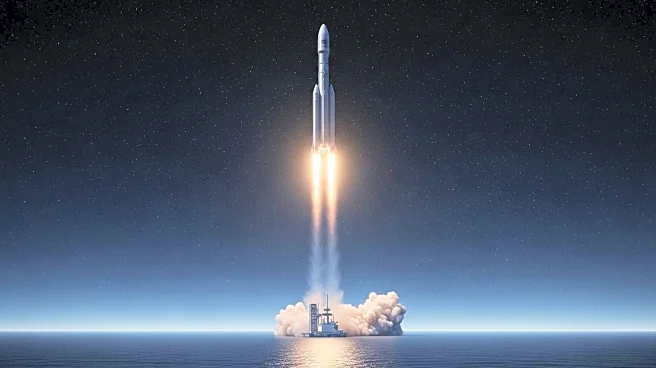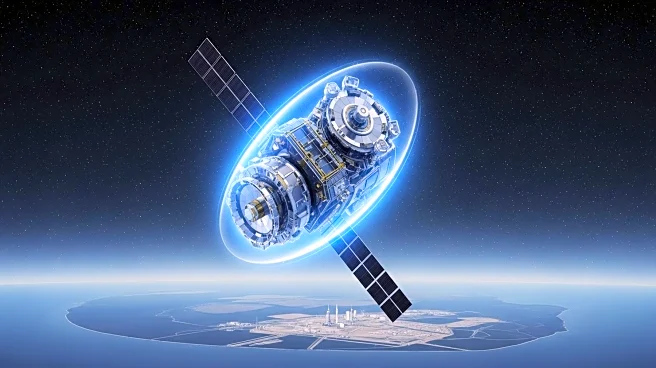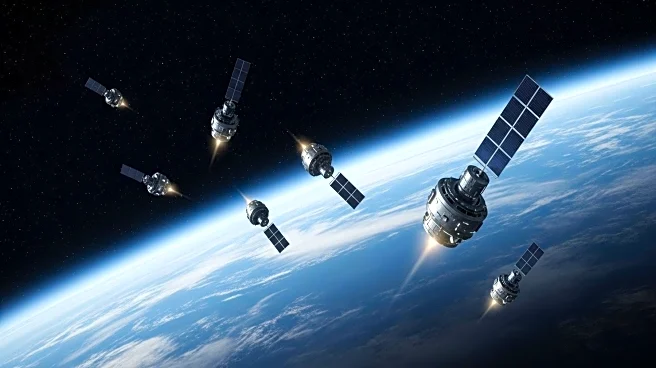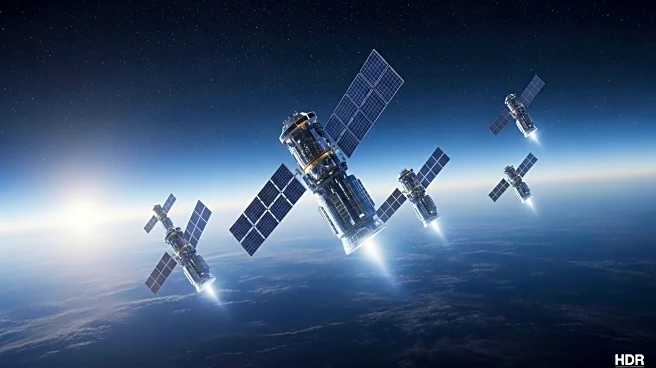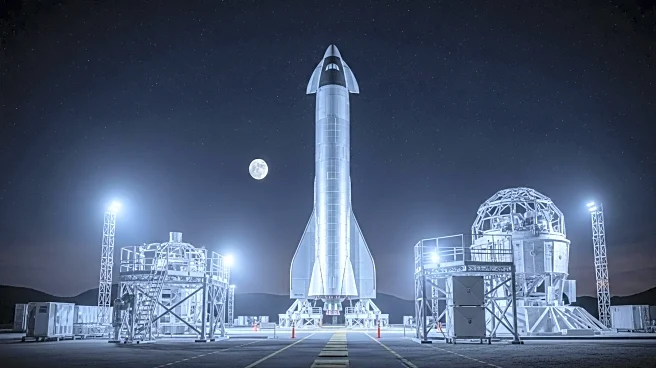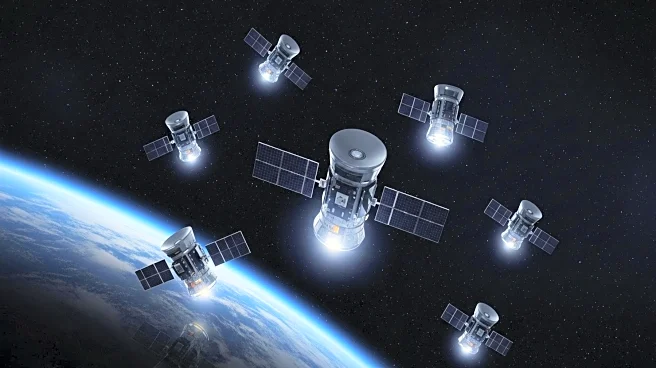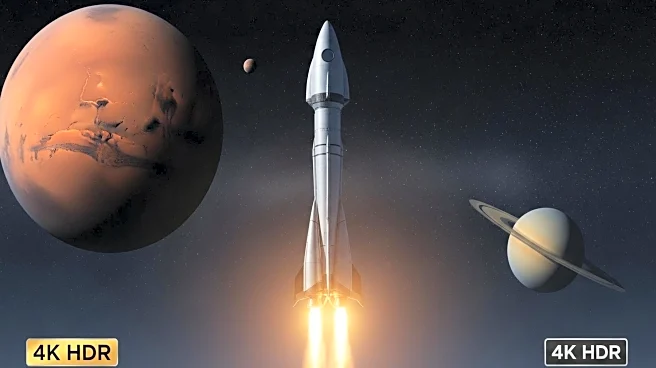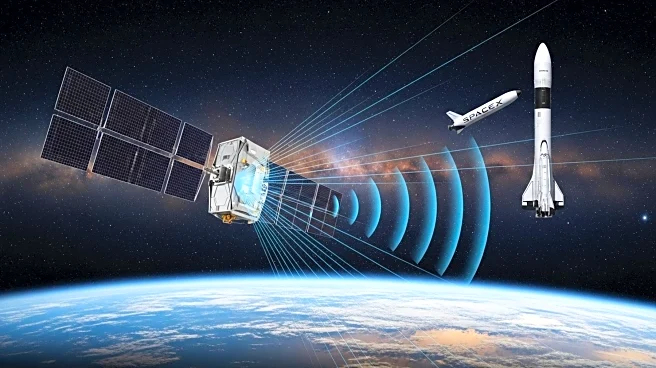What's Happening?
SpaceX successfully launched a Falcon 9 rocket carrying 28 Starlink satellites from Cape Canaveral Space Force Station in Florida. The launch took place at 2:46 a.m. EDT on October 7, 2025, marking the 90th Starlink mission of the year. The mission, known as Starlink 10-59, aims to expand SpaceX's broadband internet satellite constellation, which already includes over 8,500 satellites in low Earth orbit. The Falcon 9's first stage booster, designated B1090, completed its eighth mission and successfully landed on the drone ship 'A Shortfall of Gravitas' in the Atlantic Ocean. This launch was the first from Florida in over a week due to persistent storms in the region.
Why It's Important?
The expansion of the Starlink satellite network is significant for global internet connectivity, particularly in remote and underserved areas. By increasing the number of satellites in orbit, SpaceX enhances its ability to provide high-speed internet access worldwide. This development is crucial for bridging the digital divide and supporting economic growth in regions lacking reliable internet infrastructure. Additionally, the successful reuse and landing of the Falcon 9 booster demonstrate SpaceX's continued advancements in cost-effective space travel, potentially lowering the barrier for future space missions and commercial satellite launches.
What's Next?
SpaceX plans to continue its aggressive launch schedule, with more Starlink missions and other satellite deployments expected in the coming months. The company is also preparing for upcoming national security missions involving Falcon Heavy rockets. As SpaceX expands its satellite network, it may face regulatory challenges and competition from other satellite internet providers. Stakeholders, including governments and telecommunications companies, will likely monitor these developments closely, considering the implications for global internet access and space traffic management.
Beyond the Headlines
The rapid deployment of satellites raises concerns about space debris and the long-term sustainability of space activities. As the number of satellites in low Earth orbit increases, the risk of collisions and the creation of space debris also grows. This situation underscores the need for international cooperation and regulation to ensure the safe and sustainable use of space. Additionally, the expansion of satellite internet services could disrupt traditional telecommunications markets, prompting companies to innovate and adapt to the changing landscape.

